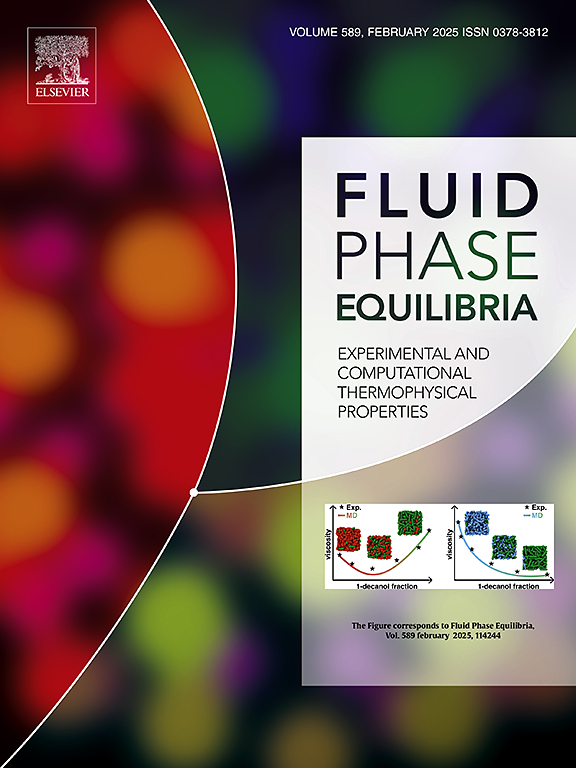Polymer solutions in supercritical fluids: Their flow behavior compared to that in normal solvents
IF 2.8
3区 工程技术
Q3 CHEMISTRY, PHYSICAL
引用次数: 0
Abstract
The dissimilar flow behavior of polymer solutions in super critical fluids, as compared with that in normal solvents, are primarily resulting from the great differences in the free volume of the pure solvents. The present analysis compares the generalized intrinsic viscosities {η} and the average shear overlap parameters for the two types of solvent. {η} depends on the polymer concentration c; it starts from the intrinsic viscosity [η] at infinite dilution and ends at the intrinsic bulkiness in the limit of the pure polymer. The overlap parameter states the average number of polymer molecules that flow together under given conditions. With regard to these parameters, super critical fluids differ from normal solvents in the following manner: [η] is much less, the intrinsic bulkiness much larger and {η} (c) runs through a deep minimum; in addition the cross-over concentration, separating the solvent dominated from the polymer dominated flow regime, is much higher. Another fundamental dissimilarity is the change in the enthalpy of mixing with increasing c from exothermic to endothermic. The above features explain, why super critical fluids have numerous advantages (like viscosities that remain very low even at high polymer concentrations) over conventional solvents and why they are used for the modification and synthesis of high-molecular substances.

求助全文
约1分钟内获得全文
求助全文
来源期刊

Fluid Phase Equilibria
工程技术-工程:化工
CiteScore
5.30
自引率
15.40%
发文量
223
审稿时长
53 days
期刊介绍:
Fluid Phase Equilibria publishes high-quality papers dealing with experimental, theoretical, and applied research related to equilibrium and transport properties of fluids, solids, and interfaces. Subjects of interest include physical/phase and chemical equilibria; equilibrium and nonequilibrium thermophysical properties; fundamental thermodynamic relations; and stability. The systems central to the journal include pure substances and mixtures of organic and inorganic materials, including polymers, biochemicals, and surfactants with sufficient characterization of composition and purity for the results to be reproduced. Alloys are of interest only when thermodynamic studies are included, purely material studies will not be considered. In all cases, authors are expected to provide physical or chemical interpretations of the results.
Experimental research can include measurements under all conditions of temperature, pressure, and composition, including critical and supercritical. Measurements are to be associated with systems and conditions of fundamental or applied interest, and may not be only a collection of routine data, such as physical property or solubility measurements at limited pressures and temperatures close to ambient, or surfactant studies focussed strictly on micellisation or micelle structure. Papers reporting common data must be accompanied by new physical insights and/or contemporary or new theory or techniques.
 求助内容:
求助内容: 应助结果提醒方式:
应助结果提醒方式:


